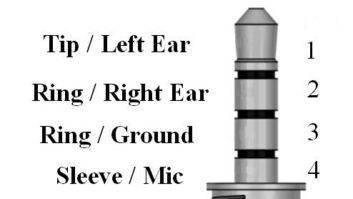Visit any radio engineer�s office and you�ll find a smattering of everything imaginable. Classic microphones, owner�s manuals from the 1980s, useful (and most likely never-to-be-used) connectors, and of course, snacks.
Marantz�s PMD 561 features all manner of input and output connectors. You might find an equally eclectic smattering of items in the news guy�s office. Engineers and news reporters are two different breed of broadcaster, but one thing unites them in a mighty way: gadgets.

Engineers like gadgets because they help get the job done, and news reporters like gadgets for the same reason. What defines a gadget? Well, short of turning to Webster for the definition, a gadget is something small, cool and with inherent benefits.
I would contend that Marantz has been in the business of making highly useful gadgets since the inception of their PMD series cassette recorders. Remember the PMD201 or PMD430? Or better yet, how about when Marantz took the moving parts out and went digital with the PMD660 compact flash recorder? Not to be outdone by its older self, Marantz has released the PMD 561 solid state flash recorder, and it too boasts plenty of great new features.
HANDS-ON
Handheld recorders are small for a reason. To a fault, however, they can be�too small. Miniature LCD displays, limited meter segments and tiny buttons are maddening. Small designs can sometimes limit inputs and outputs to 1/8-inch mini and RCA jacks. The small buttons generally lack tactile response. The PMD 561 alleviates nearly all of these concerns by sacrificing some compactness for real audio jacks, real rubberized buttons and rugged toughness.
For starters, the PMD 561 is just over 1.5-ich thick, 4-inch wide and almost 6.75-inch tall. It fits nicely in-hand with clearly labeled buttons and a 128 x 64 dot matrix OLED (organic LED) display. The display is a major highlight for the PMD 561 in that the onscreen text, options and metering are large and easy to see.
Nine large buttons live on the front panel, and they facilitate menu navigation and typical transport functions. The record button has a red ring that illuminates during recording. Essentially, the designers were conscious of users who find themselves in dim work environments.
THE INS AND OUTS
Small but not too small. Its buttons and meters are all easy to read and use. Additional controls and the inputs and outputs are positioned on the sides of the PMD 561.

A slider-type control is used to power the unit on and off. Next to the power control is a �key lock� switch. When activated, all of the buttons on the unit are locked. This prevents an accidental recording stoppage or setting change.
On the same side as the key switch are the stereo RCA output jacks, 1/8-inch TRS input jack and a post-and-ring-style left and right record level control.
The top side of the PMD 561 is home to a 1/8-inch remote control jack, headphone and speaker volume control and a line/mic/48V selector switch for the XLR inputs. The best feature on the top side is the 1/4-inch TRS headphone jack. While some may consider this a nuisance when using earbuds, this is actually another highlight for the PMD 561, as far as professional users are concerned; with a few exceptions, studio-grade headphones use 1/4-inch plugs. The 1/4-inch jack on the PMD 561 eliminates the trouble of finding (or having lost) a headphone adapter.
As we round out our tour, the left side of the PMD 561 has a 5V DC power jack, USB connector and the SD card slot. Additionally, this side houses an RCA S/PDIF input. The use of this jack may be rare, but there are times when the only available output from a mixing console is the S/PDIF jack. When in a pinch at a presser, the RCA S/PDIF jack could be a life saver and provide a little better quality to boot. The last input feature on the PMD 561 is a pair of Neutrik Combo A series XLR and 1/4-inch TRS jacks. Nearly every output interface can be used with the PMD 561.
ONBOARD MICS AND SPEAKERS
The PMD 561 has a set of stereo speakers on each side. These are small speakers with considerably less than full-range response used for confidence monitoring and spot checking a recording. The stereo mic pair is situated on the front of the PMD 561 the mic elements are hidden behind two separate grills.
Many comparable portable recorders have an exposed X/Y microphone configuration on the front. As for the PMD 561 and its rugged plastic construction and tough rubberized buttons, exposing microphone elements for the sake of gaining an X/Y pattern would be counterintuitive. The condenser microphone configuration on the PMD 561 is well suited for capturing on-location sound and critical recordings where accurate stereo replication is necessary. More importantly, the PMD 561 can be tossed into an ENG or portable recording rig without fear of breakage.
TECHNICALLY SPEAKING
Small, light-weight and rugged: this a great addition to the remote engineer�s arsenal. As would be expected, the PMD 561 comes ready to record stereo or mono mp3 (up to 320 kbps) and 16 or 24 bit PCM formats using 44.1, 48 or 96 kHz sampling rates.

Up to three presets can be stored that include 23 settings which include input type, record format, high and low cut, mic attenuation and many others. One record timer and three play timers can be set for automated record and playout.
Unique to the PMD 561 is a feature called �Retake Recording,� which allows on-the-fly-editing. Retake Recording can be utilized in the field to save editing time later in the studio. Pitch control during playback is helpful in dictation scenarios.
The PMD 561 has highly-transparent automatic level control. When used as an archive recorder during a recent radio broadcast, the ALC on the PMD 561 was accidentally left on. The recording sounded excellent, and the ALC function was inaudible. The surface mounted ten-segment LED meter provides quick-reference level monitoring. However, the OLED display can be toggled between four screens during recording. Information including recording time remaining, elapsed time, file name, input source and input levels are easily viewed. A high-resolution PPM meter shows accurate recording levels.
All in all, the PMD 561 is indeed a useful gadget. After a day of recording, all the files are easily transported to a computer via USB. It will record for up to seven hours on a set of four AA batteries. The input preamps on the XLR jacks are smooth a clean when using dynamic or condenser microphones. The overall design and construction of the PMD 561 allows the unit to travel well and be used nearly anywhere. The large buttons and easy-to-read OLED display are stunning characteristics for a small, portable recorder.
The best feature is that I used the PMD 561 as an archive recorder and a recorder for a video shoot without cracking open the manual!
The PMD 561 is highly intuitive and easy to use. I look forward to keeping this gadget in my arsenal for many years to come.
Wygal is the operations manager for The Journey Radio Network in Virginia.












